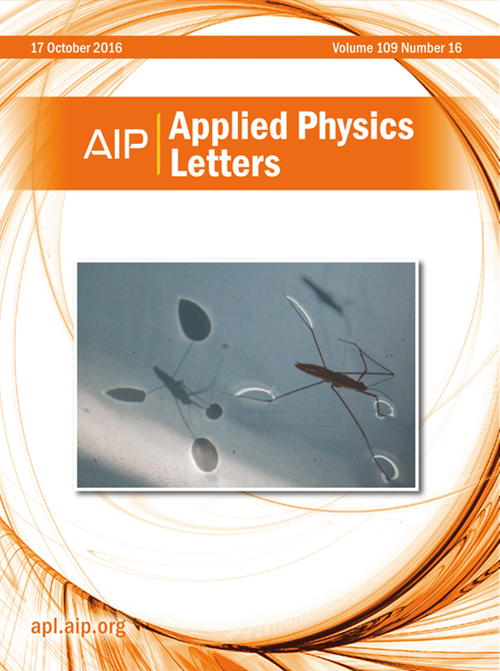二维材料的叠层、应变工程诱导的电磁学、多压电效应和拓扑态
IF 3.5
2区 物理与天体物理
Q2 PHYSICS, APPLIED
引用次数: 0
摘要
电磁是最近发现的一种非常规反铁磁性(AFM)形式,它可以在没有净磁化的情况下消除自旋简并,为低功耗和超快速器件应用提供了平台。然而,对叠层、应变、交变磁体、多压电效应和拓扑状态之间的关系关注较少。在这里,我们提出了一种通过堆叠和应变工程来实现二维(2D)材料中交流磁体、多压电效应和拓扑状态的机制。在对称性分析的基础上,我们发现互磁多层材料的自旋分裂特性与Ut、PTt、MzUt或MzPTt的对称性有关。此外,我们发现叠层工程可以有效地实现Janus双层V2SeTeO从反铁磁性到交变磁性、从半导体到金属的转变。更有趣的是,应变不仅引起了一个有趣的多压电效应,包括压谷、压磁性和压电,而且还实现了丰富的拓扑相位。我们的发现为操纵自旋分裂、谷极化和拓扑态提供了一个广义的方向,促进了基于二维交替磁体的谷电子和自旋电子器件的实际应用。本文章由计算机程序翻译,如有差异,请以英文原文为准。
Stacking-, strain-engineering induced altermagnetism, multipiezo effect, and topological state in two-dimensional materials
Altermagnetism, a recently identified form of unconventional antiferromagnetism (AFM), enables the removal of spin degeneracy in the absence of net magnetization that provides a platform for the low power consumption and ultra-fast device applications. However, a little attention has been paid to the relationship between stacking, strain, and altermagnet, the multipiezo effect, and the topological state. Here, we propose a mechanism to realize the altermagnet, the multipiezo effect, and the topological state in two-dimensional (2D) materials by the stacking and strain engineering. Based on the analysis of symmetry, we find that the spin splitting feature related to the Ut, PTt, MzUt, or MzPTt symmetries in altermagnet multilayers. In addition, we find that the stacking engineering can effectively realize the transform from antiferromagnetism to altermagnetism and semiconductor to metal for the Janus bilayer V2SeTeO. More interestingly, the strain not only induces an intriguing multipiezo effect, encompassing the piezovalley, piezomagnetism, and piezoelectric, but also achieves the abundant topological phase. Our findings offer a generalized direction for manipulating the spin splitting, valley polarization, and topological states, promoting practical application of valleytronic and spintronic devices based on two-dimensional altermagnets.
求助全文
通过发布文献求助,成功后即可免费获取论文全文。
去求助
来源期刊

Applied Physics Letters
物理-物理:应用
CiteScore
6.40
自引率
10.00%
发文量
1821
审稿时长
1.6 months
期刊介绍:
Applied Physics Letters (APL) features concise, up-to-date reports on significant new findings in applied physics. Emphasizing rapid dissemination of key data and new physical insights, APL offers prompt publication of new experimental and theoretical papers reporting applications of physics phenomena to all branches of science, engineering, and modern technology.
In addition to regular articles, the journal also publishes invited Fast Track, Perspectives, and in-depth Editorials which report on cutting-edge areas in applied physics.
APL Perspectives are forward-looking invited letters which highlight recent developments or discoveries. Emphasis is placed on very recent developments, potentially disruptive technologies, open questions and possible solutions. They also include a mini-roadmap detailing where the community should direct efforts in order for the phenomena to be viable for application and the challenges associated with meeting that performance threshold. Perspectives are characterized by personal viewpoints and opinions of recognized experts in the field.
Fast Track articles are invited original research articles that report results that are particularly novel and important or provide a significant advancement in an emerging field. Because of the urgency and scientific importance of the work, the peer review process is accelerated. If, during the review process, it becomes apparent that the paper does not meet the Fast Track criterion, it is returned to a normal track.
 求助内容:
求助内容: 应助结果提醒方式:
应助结果提醒方式:


